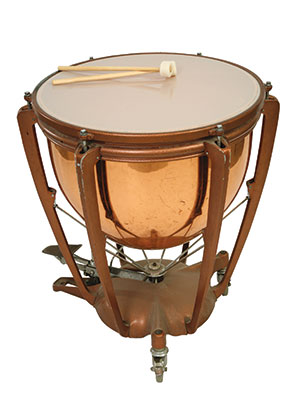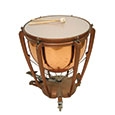 The notion that there are mistakes in individual instrument parts of orchestra or band music is indisputable to professional musicians, who are experienced in correcting mistakes through careful listening, help from scholarly sources such as The Orchestral Violinist’s Companion by Martin Wulfhorst, and knowledge of style and performance practice. Errors or omissions in music parts can occur in any element of the music and are usually corrected by comparing a part to the full score. The same could be said about music composed for student ensembles, except that the responsibility commonly falls on the teacher, particularly if students are not trained to listen to and scrutinize their part relative to the whole ensemble.
The notion that there are mistakes in individual instrument parts of orchestra or band music is indisputable to professional musicians, who are experienced in correcting mistakes through careful listening, help from scholarly sources such as The Orchestral Violinist’s Companion by Martin Wulfhorst, and knowledge of style and performance practice. Errors or omissions in music parts can occur in any element of the music and are usually corrected by comparing a part to the full score. The same could be said about music composed for student ensembles, except that the responsibility commonly falls on the teacher, particularly if students are not trained to listen to and scrutinize their part relative to the whole ensemble.
However, the idea that there could be pitches written that do not fit the harmony or make sense, considering the composer’s typical musical vocabulary, would be surprising to most musicians. The inferred reasons for an intentional wrong pitch could only be either to compensate for a shortcoming in the functioning of a particular instrument or to accommodate the limited abilities of student musicians. Timpanists, both professional and student, have been faced with parts in orchestra and band that have wrong pitches chosen by the composer. These compromise dissonances occur when the part calls for a timpanist to play a previously tuned pitch instead of retuning a new pitch to fit the harmony or bass line. The phenomenon spans two centuries.
During the first half of the nineteenth century, chromaticism took hold as composers embraced the evolving Romanticism. Unfortunately, there was not yet a reliable means for quick and accurate retuning of timpani while the orchestra played. In addition, the use of more than two drums was rare until the second half of the nineteenth century. These factors limited the number of timpani pitches available in an orchestral work. In most cases, had the composer required three or four drums (actually, a second pair because the largest and smallest sizes common today were not in production yet), the problem of compromise dissonances would have been solved. The timpani fell short as composers took advantage of the chromatic potential of valves for brass instruments. The Classical Period practice of linking timpani with trumpet parts (e.g., music of Haydn) would soon result in gaps of silence where the timpanist could not tune the necessary pitches fast enough. Some early Romantic Period composers, such as Mendelssohn and Schumann, opted to use the timpani on wrong pitches, presumably because they favored the effect the timpani had in the ensemble, while ignoring any pitch disagreements.1
A sampling of some of the more salient wrong pitches from that period:
Schumann’s Symphony #3, movement 2, two measures after letter B: the timpanist plays C in a B dominant seventh chord. In the next measure, G is played in an E major chord.
Schumann’s Symphony #4, movement 1, four measures before letter E: the timpanist plays Db, making an F major harmony sound like an augmented triad.
Mendelssohn’s Symphony #4, movement 1, 41 measures after letter F: the timpanist plays E in an E# diminished seventh chord.
Verdi’s Requiem – Dies irae: in measure 34 the timpanist plays D in a Bb minor harmony, and in measure 136 the timpanist plays Eb in a C# minor harmony.
Schubert’s Unfinished Symphony: there are numerous places where the addition of a third drum would have eliminated compromise dissonances. A particularly glaring example occurs two measures before rehearsal F, where the timpanist plays Bs against the C#s in the basses.
Today, timpanists and conductors need to make decisions about wrong pitches in orchestral music from that period. Some are traditionalists, choosing to keep all notes as composed, no matter how disturbing a dissonance might be. Others choose to take advantage of the additional drums in a modern set of timpani, and the pedal tuning system, to eliminate compromise dissonances chosen by a composer.2 The thinking is that if composers had access to modern timpani they would have chosen to avoid undesirable dissonances.
Starting in the mid-twentieth century, some composers, including Hindemith, Nelhybel, and Persichetti, who were already successfully writing for professional orchestras and chamber ensembles, began writing for student symphonic bands and wind ensembles at the high school and college level, both through commissioned works and the Young Composer’s Project.3 By this time, a set of four timpani was the norm, with the occasional fifth drum (piccolo) being available. The harmonic language of the 1950s and 1960s was much more complex and diverse than that used at any time during the Romantic Period. However, just like one hundred years earlier, composers had to compromise, still due, at least in part, to limitations in the equipment.
Timpani parts were, and still are, frequently linked to the bass voices in the band, and the chromatic movement of the bass line could make retuning necessary many times during a piece. Two retuning situations that occur in this music require accurate tuning gauges. Silent tuning occurs when the timpanist is playing on other drums and has no chance to hear the new pitch before playing it. Instantaneous tuning occurs when the only time to retune a drum is at the instant it is played with a new pitch. The pedal must be moved quickly and precisely to the new pitch as the mallet strikes the head. Unfortunately, tuning gauges were not standard on student-model timpani (as late as 1980 the Ludwig Catalog listed tuning gauges as optional on all models of timpani), and that extra expense was sometimes avoided. Another reason people refused to buy gauges was an attitude that they are a crutch that prevents ear training in intervals. It should also be noted that professional Dresden-type timpani have a pedal system that makes it much easier to move the pedal to a new pitch quickly and precisely. These drums were, and remain, rare in high schools because of the extra expense.
Just like the compromise dissonances that composers chose to include in the early Romantic Period, the band music of the mid-twentieth century has timpani parts with wrong pitches, for a similar reason – the belief that timpanists would not be able to keep up with rapid tuning changes, whether because of equipment limitations or level of training. This may well have been the case during the 1950s and 1960s, because band music up to this point had simpler timpani parts, typically using two or three drums with fewer pitch changes.4 As a result, composers occasionally opted to have student timpanists play on a previously tuned pitch, even if it resulted in a dissonance, just for the effect of the timpani in the ensemble.
A sampling of some of the more salient wrong or omitted pitches from the band music of the 1950s, 1960s, and earlier:
First Suite in Eb for Military Band by Gustav Holst, measures 9-14 after letter A: the timpanist plays Eb or Bb when the bass instruments plays in unison on other pitches (F, C, G). The timpanist could support the bass voices by playing this chaconne accurately with the use of four drums and a few retunings.
American Overture for Band by Joseph Willcox Jenkins (2003 revised edition): in measures 6 and 10 the timpanist plays G in a Bb major triad. In measure 33 the timpanist plays G in a Bb dominant seventh chord. In measure 48 the timpanist plays Eb in a Db major harmony.
Rocky Point Holiday by Ron Nelson, two measures before rehearsal number 29: the timpanist plays D in an A major triad.
Symphonic Movement by Vaclav Nelhybel: in measure 46 the timpanist plays C in an E minor chord. In measure 47 the timpanist plays G in a Db minor chord, and C in an Eb minor chord. The same wrong pitches continue in the next two measures.
Symphony in B-flat by Paul Hindemith, movement 2, measure 87: evidence indicates that a resolution note is omitted because it was not previously tuned in the timpani (if using only three drums). The timpanist could play G to support the bass line.
Trittico for Symphonic Band by Vaclav Nelhybel, in movement 1, measure 83: the timpanist plays two Gs when the entire band plays G, then B. In measure 85 the timpanist plays C in an Eb major triad (this is probably a copying mistake, since an Eb is already tuned and should be played here). In measure 89 and 93 the timpanist plays C in a D minor triad.
Today tuning gauges are standard on all but the most inexpensive models of timpani. Modern timpani are capable of producing improved tone quality and pitch clarity, because of extended collars on heads, scientifically designed bowls,5 improved pedal mechanisms, and tuning gauge design. Starting approximately in the 1990s, composers of band music capitalized on the capabilities of modern timpani by using a two-octave range of pitches (D2-D4) available with five drums. Still, some have chosen to write compromise dissonances, reducing the amount of retuning required in order to keep their music more accessible to high school-level timpanists. For example, in the first movement of Give Us this Day by David Maslanka, starting in measure 62 the timpanist sustains G in unison with the bass voices. In measures 72 and 73 the basses play E but the timpanist stays on G. In measure 74 the basses play F#, but the timpanist still stays on G. I learned from corresponding with Maslanka that this was an effort to keep the part attainable to more high school timpanists.
Learning how to use timpani tuning gauges effectively takes finding a balance between the need to develop a student’s ear and the need for accurate tuning and retuning during a performance. Require timpanists to learn intervals and a sense of tonality by singing solfege syllable patterns. Have them tune the initial pitches for a piece using only one reference pitch. When time allows, they should retune during a piece using the ear to determine the interval from an existing pitch, but not necessarily the pitch on the drum needing retuning. Instead, use any pre-tuned pitch that provides a confident interval to the new pitch. Students can also learn to identify pitch cues played in the ensemble at an appropriate time that will help with their retuning.
Realize that a reliance on tuning gauges is necessary when silent or instantaneous retuning must be done. Make it the student’s responsibility to set the gauges accurately just prior to a performance.
Finding and fixing wrong pitches requires careful listening to the ensemble, particularly the line that the timpanist might be playing with other bass instruments. Discrepancies in pitch can then be examined in the score, the reason for the discrepancy can be deduced, and whether a change is appropriate and feasible can be decided. Any added retunings should be planned and practiced. These extra efforts by the timpanist will lead to improved pitch clarity in the ensemble’s bass voices, something every student ensemble should seek.
Footnotes
1 A Closer Look at the Timpani Parts in the Symphonic Music of the Early 19th Century by John E. Rack (Percussive Notes, vol. 28, no. 2, 1990, pages 51-54).
2 Editing the Timpani Parts of the Orchestral Music of the 18th and 19th Centuries by Eric Remsen (Percussive Notes, vol. 21, no. 2, 1983, pages 50-59).
3 The Twentieth Century American Wind Band/Ensemble by Frank Battisti (Meredith Music Publications, Fort Lauderdale, 1995, pages 65-77).
4 Battisti, pages 3-11.
5 The Well-Tempered Timpani by Richard K. Jones (wtt.pauken.org, chapter 3).






